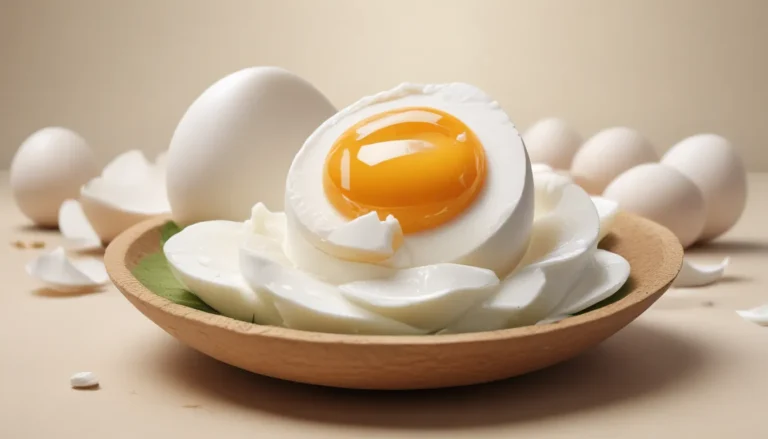The pictures in our articles might not always show exactly what the text is talking about. We use these images to make the article more interesting and eye-catching. They are there to add to the text, but not to replace it or show every detail.
Bread rolls are a beloved staple in many households, offering a versatile and delicious option for any meal or snack. Whether you prefer them soft and fluffy or crispy and crusty, bread rolls come in various shapes, sizes, and flavors to suit all tastes. But have you ever wondered about the nutrition facts of these delightful treats? In this article, we will dive deep into the nutrition facts and health benefits of bread rolls, shedding light on their caloric content, macronutrient composition, and various key nutrients. Understanding the nutritional value of bread rolls can help you make informed choices about incorporating them into your diet. So, whether you enjoy a classic dinner roll with your evening meal or indulge in a hearty sandwich on a soft roll, read on to discover the nutritional profile of bread rolls and how they can fit into a balanced diet.
Key Takeaways:
- Choose whole grain or multi-grain bread rolls for added fiber and nutrients. Pair them with lean protein, veggies, and healthy fats for a satisfying meal.
- Enjoy the versatility of bread rolls with unique flavors and textures. From tangy sourdough to sweet Hawaiian rolls, there’s a bread roll for every taste preference.
The Nutritional Breakdown of Different Types of Bread Rolls
Whole Wheat Bread Roll
The whole wheat bread roll is a nutritious choice, packed with fiber, vitamins, and minerals. It is low in fat and provides a good source of carbohydrates to keep you energized throughout the day.
Multigrain Bread Roll
The multigrain bread roll is another healthy option, combining the goodness of various grains like wheat, oats, and barley. It is high in fiber and nutrients, making it a great choice for a balanced diet.
Sourdough Bread Roll
The sourdough bread roll is known for its tangy taste and unique texture. It is made using a fermented dough, giving it a slightly sour flavor. Sourdough bread rolls are often easier to digest and have a lower glycemic index compared to other bread rolls.
Rye Bread Roll
The rye bread roll is made using rye flour, which has a distinct flavor and a denser texture. It is high in fiber, B vitamins, and minerals like manganese and selenium. Rye bread rolls are a popular choice for sandwiches and can be a great addition to a healthy meal.
Ciabatta Bread Roll
The ciabatta bread roll originated in Italy and is known for its crispy crust and soft interior. It is made using a high moisture dough, resulting in a light and airy texture. Ciabatta bread rolls are often used for sandwiches or served alongside soups and salads.
Pumpernickel Bread Roll
Pumpernickel bread rolls are made using coarse rye flour and have a dark, dense texture. They are rich in fiber and have a distinctive flavor. Pumpernickel bread rolls are often enjoyed with savory toppings like smoked salmon or cream cheese.
Kaiser Bread Roll
Kaiser bread rolls are characterized by their symmetrical shape and a pattern of slashes on the top. They are typically made with white flour and have a crispy crust. Kaiser bread rolls are versatile and can be enjoyed with a variety of fillings.
Pretzel Bread Roll
Pretzel bread rolls have a unique twisted shape and a chewy texture, similar to traditional soft pretzels. They are often sprinkled with coarse salt for added flavor. Pretzel bread rolls can be enjoyed on their own or as a side to soups or sandwiches.
Brioche Bread Roll
Brioche bread rolls are known for their rich and buttery flavor. They are made with a dough enriched with eggs and butter, resulting in a soft and tender texture. Brioche bread rolls are delicious when served as breakfast buns or used for sandwiches.
Baguette Bread Roll
Baguette bread rolls are long and slender, with a crisp crust and a light, airy interior. They are a staple in French cuisine and are often used to make sandwiches or served alongside cheese and charcuterie platters.
Whole Grain Bread Roll
Whole grain bread rolls are made using flour that contains the entire grain, including the bran, germ, and endosperm. They are higher in fiber and nutrients compared to rolls made with refined flour. Whole grain bread rolls make a nutritious choice for a well-rounded meal.
Other Varieties of Bread Rolls
- Cinnamon Roll
- Garlic Knot Roll
- Hawaiian Sweet Bread Roll
- Poppy Seed Roll
Tips for Choosing and Enjoying Bread Rolls
- Choose whole grain or multi-grain options for added fiber and nutrients.
- Pair your bread roll with lean protein, fresh vegetables, and healthy fats for a well-rounded meal.
- Enjoy different flavors and textures of bread rolls for a unique dining experience.
In conclusion, bread rolls are a versatile food option that can be enjoyed in a variety of ways. While it's important to consider the nutritional content of bread rolls, they can be a part of a balanced diet when consumed in moderation. Remember to choose whole grain options for added nutrients and fiber. Enjoy these tasty treats mindfully, savoring each bite and appreciating the wonderful flavors they bring to the table.
FAQs
-
Are bread rolls high in calories?
Bread rolls can vary in calorie content, depending on the size and type of roll. Choosing whole grain options can provide more fiber and nutrients, making them a healthier choice. -
Are bread rolls a good source of nutrients?
While bread rolls can provide some nutrients like carbohydrates, they may not be as nutrient-dense as whole grains or other food options. To boost the nutritional value, opt for whole grain bread rolls and pair them with lean protein, vegetables, and healthy fats. -
Can I include bread rolls in a balanced diet?
Yes, bread rolls can be included in a balanced diet when consumed in moderation. Pairing bread rolls with nutrient-rich ingredients can help create a more balanced and satisfying meal. -
Can bread rolls be part of a weight loss diet?
While bread rolls can be higher in calories, they can still be included in a weight loss diet when consumed as part of a well-rounded and portion-controlled meal. Choosing whole grain options and filling them with lean protein and plenty of vegetables can help support weight loss goals. -
Can I make my own bread rolls at home?
Absolutely! Making bread rolls at home gives you control over the ingredients and allows you to customize them to suit your taste preferences and dietary needs. There are plenty of easy-to-follow recipes available online to guide you through the process.
Explore the diverse world of bread rolls and discover the perfect match for your taste buds. Enjoy them as part of a balanced diet, knowing that you are making informed choices about your nutrition. Cheers to delicious and nutritious bread rolls!






